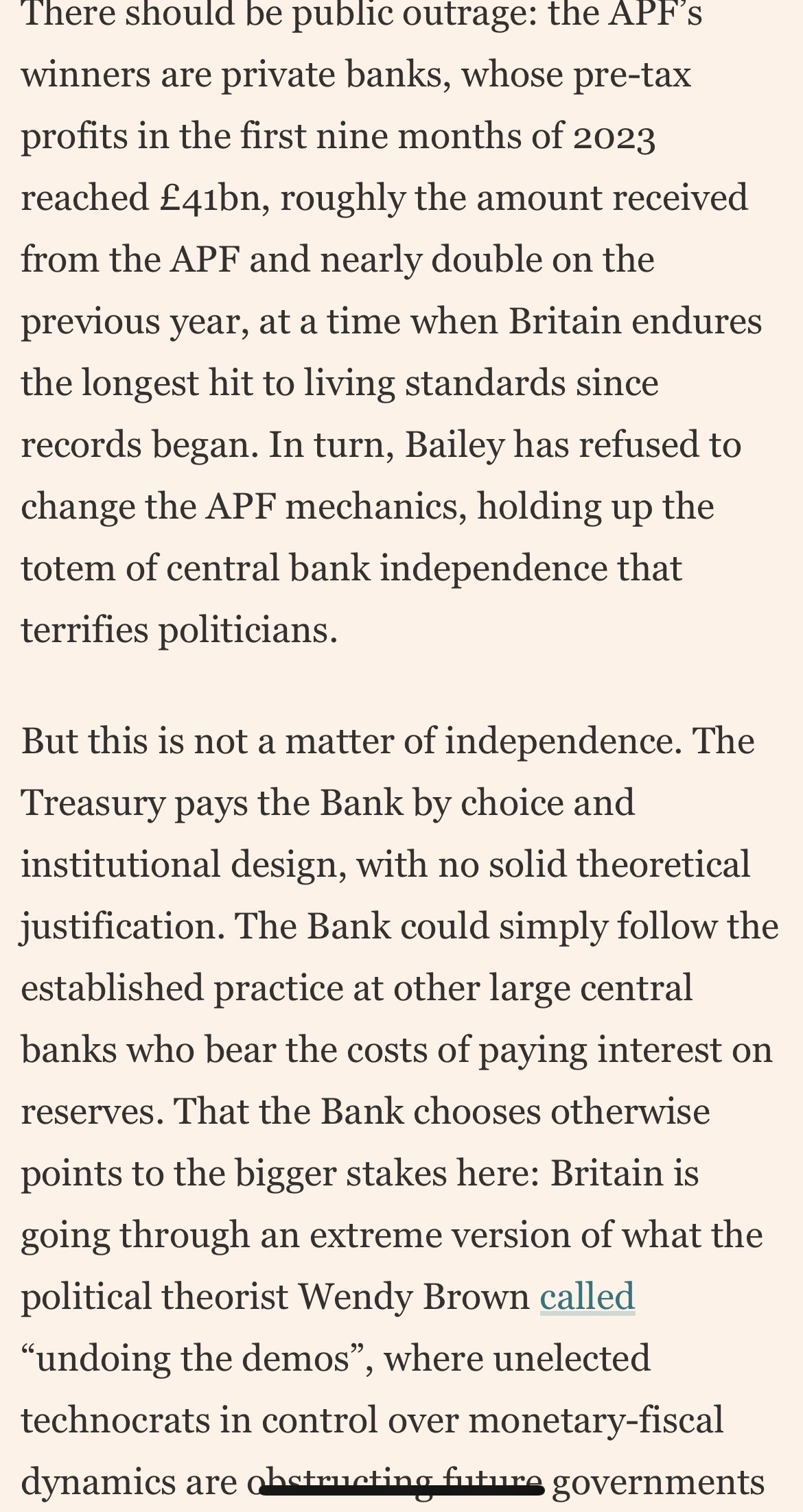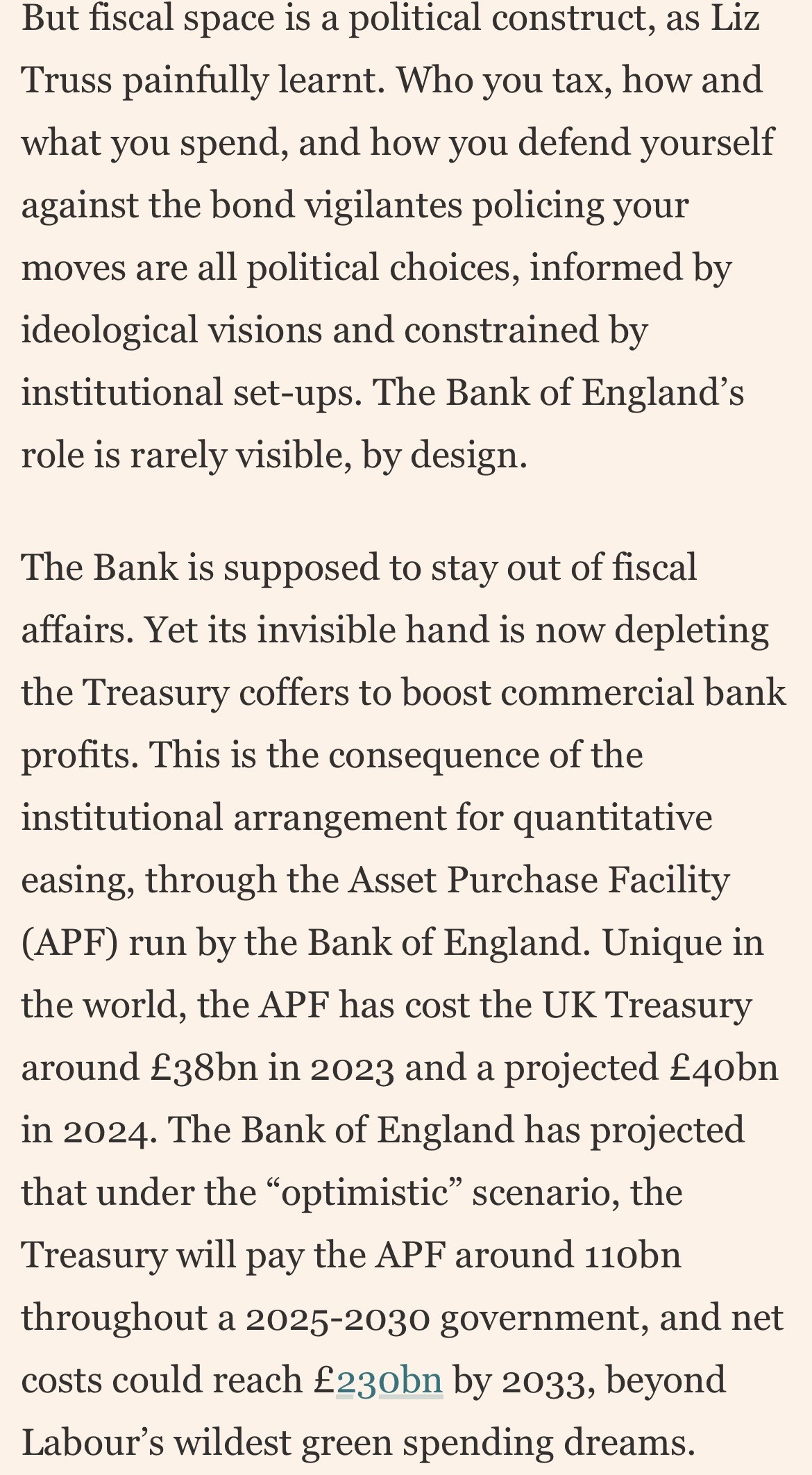But fiscal space is a political construct, as Liz
Truss painfully learnt. Who you tax, how and
what you spend, and how you defend yourself
against the bond vigilantes policing your
moves are all political choices, informed by
ideological visions and constrained by
institutional set-ups. The Bank of England's
role is rarely visible, by design.
The Bank is supposed to stay out of fiscal
affairs. Yet its invisible hand is now depleting
the Treasury coffers to boost commercial bank
profits. This is the consequence of the
institutional arrangement for quantitative
easing, through the Asset Purchase Facility
(APF) run by the Bank of England. Unique in
the world, the APF has cost the UK Treasury
around £38bn in 2023 and a projected £40bn
in 2024. The Bank of England has projected
that under the "optimistic scenario, the
Treasury will pay the APF around 110bn
throughout a 2025-2030 government, and net
costs could reach £230bn by 2033, beyond
Labour's wildest green spending dreams.


